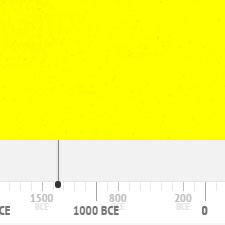Arylide Yellow
Synthetic organic pigmentComposition and Properties of Arylide Yellow
Arylide yellow is one of the many variants of organic pigments containing the group of two nitrogen atoms —N=N— bound together by a double bond (monoazo group). The chemical formula is shown below.
Hansa yellow light is rather stable in weak acids and bases but less stable than other members of the group of arylide pigments. Like many of the other organic pigments, it is not resistant to heat. The pigment meets the requirements for the lightfastness of artists’ paints. Arylide pigments tend to change their properties after having been solved in most of the usual solvents and show discoloration towards the red end of the spectrum.
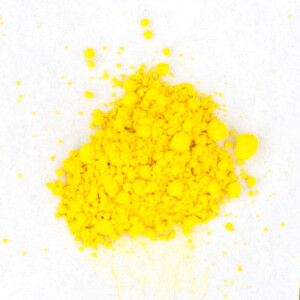
Pigment
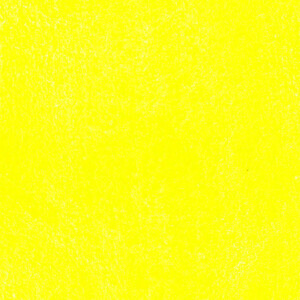
Painted swatch
Names of Arylide Yellow
Alternative names
Hansa Yellow Light, Hansa Lemon Yellow, Helio Yellow, Permanent Yellow
Color Index
PY 3, CI 11710
Word origin
From the term aromatic denoting cyclic organic compounds with delocalized double bonds.
Hansagelb, Echtgelb
German
Jaune Hansa
French
Giallo Hansa
Italian
Amarillo de Hansa
Spanish
Preparation of Arylide Yellow
Hansa yellow light (PY 3) can be prepared in the following way: In the first step, a diazonium salt is prepared from 2-nitro-4-chloro aniline and sodium nitrite. In the second step, the diazonium salt is coupled with the substituted acetoacetanilide. The second step of the reaction is shown below.
Second Step of the Synthesis
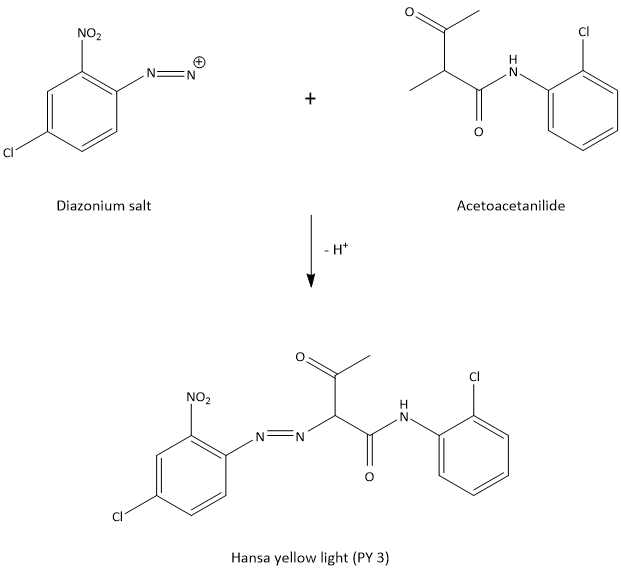
History of Use
The first pigment of the arylide yellows group designated PY 1 (pigment yellow 1) was discovered in 1909 by Hermann Wagner in Germany. It started to be commercially available around 1925 and more widely used predominantly as a replacement for the toxic cadmium yellow after 1950.
Examples of use
Alexander Calder, Form Against Yellow, 1936
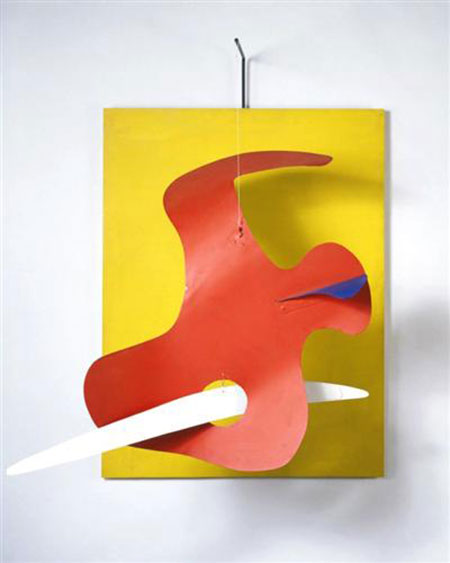
Identification
Infrared Spectrum
- IR Spectrum (FTIR) at CAMEO Material Database.
- IR-Spectrum in: Susan Lake and Suzanne Lomax. Arylide (Hansa) Yellow Pigments, in Artists’ Pigments, Vol. 4, Berrie, B.H., Ed., National Gallery of Art Washington, 2007, p 203.
Raman Spectrum
Raman Spectrum in: Susan Lake and Suzanne Lomax. Arylide (Hansa) Yellow Pigments, in Artists’ Pigments, Vol. 4, Berrie, B.H., Ed., National Gallery of Art Washington, 2007, p 208.
X-Ray Fluorescence Spektrum (XRF)
X-Ray Fluorescence Spectrum at CAMEO Material Database.
References
(1) Alain Colombini and Delphine Kaifas, Characterization of some orange and yellow organic and fluorescent pigments by Raman spectroscopy, e-Preservation Science, 2010, 7, pp. 14-21. Available as pdf.
(2) Nadim C. Scherrer a, Zumbuehl Stefan, Delavy Francoise, Fritsch Annette, Kuehnen Renate, Synthetic organic pigments of the 20th and 21st century relevant to artist’s paints: Raman spectra reference collection, Spectrochimica Acta Part A 73 (2009) 505–524. Available as pdf.
(3) P. Vandenabeele1, L. Moens, H. G. M. Edwards and R. Dams, Raman spectroscopic database of azo pigments and application to modern art studies, Journal of Raman Spectroscopy, Volume 31, Issue 6, pages 509–517, June 2000.
(4) Franziska Schulte1, Klaus-Werner Brzezinka, Karin Lutzenberger, Heike Stege and Ulrich Panne, Raman spectroscopy of synthetic organic pigments used in 20th-century works of art, Journal of Raman Spectroscopy, Volume 39, Issue 10, pages 1455–1463, October 2008.
Further Reading
References
(1) Susan Lake and Suzanne Lomax. Arylide (Hansa) Yellow Pigments, in Artists’ Pigments, Vol. 4, Berrie, B.H., Ed., National Gallery of Art Washington, 2007, pp 179 – 222.
(2) B. Berrie, S.Q. Lomax, ‘Azo Pigments: Their History, Synthesis, Properties and Use in Artists’ Materials‘, Studies in the History of Art, National Gallery of Art, Washington DC, No. 57, 1997.
(3) M. de Keijzer, ‘A survey of red and yellow modern synthetic organic artists pigments discovered in the 20th century and used in oil colors‘, ICOM Preprints Lyons, France, Getty Conservation Institute, Los Angeles, p. 369, 1999.
(4) S. Muntwyler, J. Lipscher, HP. Schneider, Das Farbenbuch, 2nd. Ed., 2023, alataverlag Elsau, pp. 190-191.

